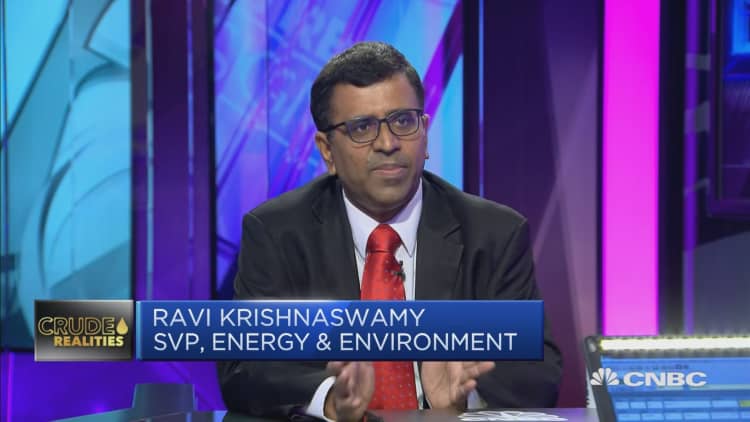Oil prices rose on Thursday in a session of volatile trade, pressured by concerns that slowing global economic growth could dent demand but drawing support from signs that Saudi Arabia is cutting crude output.
U.S. West Texas Intermediate crude oil futures ended Thursday's session up 55 cents, or 1.2 percent, to $47.09 a barrel. Brent crude futures were up 91 cents, or 1.7 percent, at $55.82 a barrel by 2:26 p.m. ET.
Prices traded in a wide range, with Brent hitting a session high of $56.30 a barrel and a low of $53.93 a barrel. WTI posted a session high of $47.49 a barrel and a low of $45.35 a barrel.
Crude futures mirrored volatility in other markets after tech giant Apple cut its sales forecast, citing a slowdown in China. The news rattled U.S. equity markets and weighed on oil prices, which have recently moved in tandem with Wall Street.

Weaker-than-expected U.S. factory data added to worries about a slowing global economy.
"Oil is flip-flopping on concerns of supply and demand," said Phil Flynn, an analyst at Price Futures Group in Chicago. "It's really a battle between the supply situation, which looks to be tightening, versus the possibility that demand will drop off."
U.S. oil and gas executives' outlook turned negative for the first time since the low point of the last oil bust, according to results of a survey released on Thursday by the Federal Reserve Bank of Dallas.
Supporting futures were signs of reduced supply from OPEC members. OPEC oil supply fell in December by the largest amount in almost two years, a Reuters survey found, as top exporter Saudi Arabia made an early start to a supply-limiting accord while Iran and Libya posted involuntary declines.
"The feeling is that OPEC is delivering on cuts," SEB head of commodities Bjarne Schieldrop said.
OPEC, led by Saudi Arabia, alongside allied producers led by Russia, agreed last year to rein in supplies starting from January after oil prices tumbled from above $86 on worries about surging output.
Investors have been concerned about rising supply from top producers, including the United States and Russia.

Riyadh was expected to cut February prices for heavier crude grades sold to Asia due to weaker fuel oil margins while reducing prices for light grades to keep Saudi oil competitive against rising U.S. shale oil supplies, a Reuters survey showed on Thursday.
Supply from Iraq, the second biggest producer in OPEC, has also climbed, with December exports at 3.73 million bpd versus 3.37 million bpd in November.
Libya's closed Sharara oilfield is expected to lose 11,000 barrels per day, state oil company NOC said on Thursday. NOC declared force majeure on Dec. 17 at Sharara, its biggest oilfield, after it was taken over on Dec. 8 by tribesmen, armed protesters and state guards demanding salary payments and development funds.
Libya's oil exports have also been suspended as bad weather conditions forced the OPEC country to shut all its export terminals, a local shipping agent and a Libyan oil source told Reuters on Thursday.

